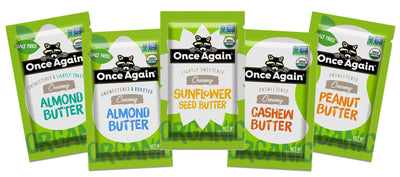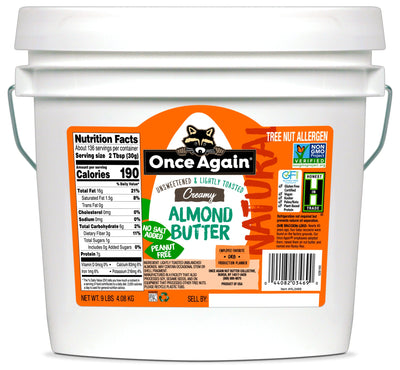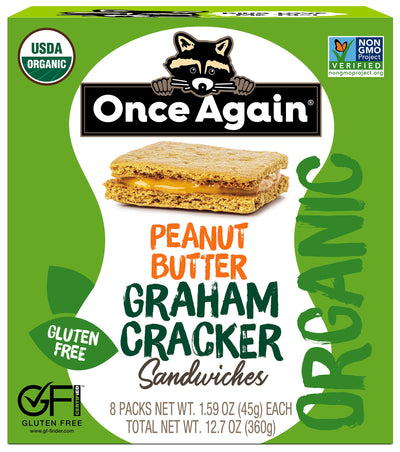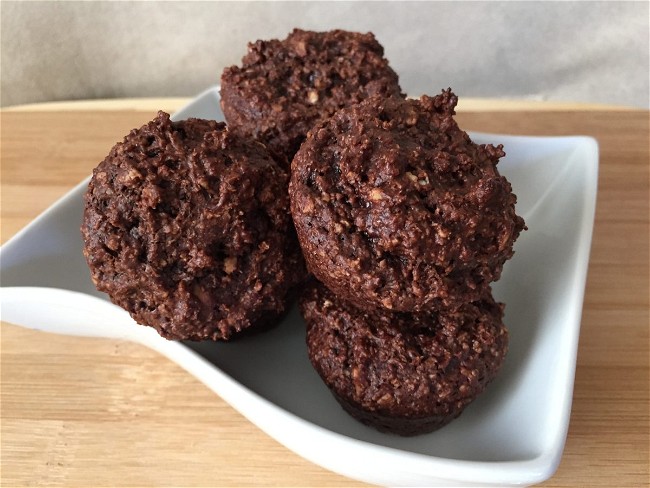Chocolate Oat Brownie
We have posted a few recipes with oat flour as an ingredient. Something I use very often in my recipes, it is one of my favorite ways to adapt a conventional recipe to a gluten-free version by substituting oat flour for the wheat version. A few readers brought up some points and questions about oat/oat flour that are interesting to share. So today: Chocolate Oat Brownies!
First off, oat flour is simply ground up oats. You may purchase oat flour, or if you are like me, and would like to control how coarse the oat flour is depending on the recipe, then you can make it yourself. Usually 1 cup of whole oats will yield about ¾ cups of flour. Add the oats to a food processor, a mini chopper, or even a coffee grinder to get the texture you are looking for. I recommend making just what you need for the recipe instead of making extra for storage. Oat flour attracts humidity and can easily spoil if not kept in an airtight container in a dry cool place. The whole oats, on the other hand, are much more stable. I hope this makes it easier for a lot of you to try out some of the recipes with oat flour!
Next, please consider that not all oats are gluten-free, meaning that some types may prove unsafe for those who are gluten-intolerant. No doubt, some will find this confusing. Pure, uncontaminated oats are indeed gluten-free! Unfortunately, the issue with oats is cross-contamination. Most commercial oats are processed in facilities that also process barley, wheat, and rye (all of which contain gluten). Another contamination point occurs in the actual fields where the oats grow. If oats are grown next to wheat fields, cross-contamination may be difficult to control at time of harvest due to shifting winds and other variables. So unless the package actually says “gluten-free,” there is no guarantee that it isn’t contaminated with gluten.
Nevertheless, many gluten- intolerant people have no reaction when they consume oats, even if they are not marked as gluten-free certified. That is simply because people have different levels of sensitivity to gluten. It is a very personal scale, and only those who frequently buy and try different oats can safely make choices for themselves. Our advice is to always be clear — if you bake a recipe with gluten-free certified oats or just plain oats, let your food audience know precisely which —so that individuals can make an informed decision about their consumption of the product.
As I mentioned, oat flour is my favorite way to make a recipe, gluten-free- friendly! It is much easier to bake with than potato or corn flour, in my opinion. It is also more versatile than xanthan gum or almond flour. Oats also add so much fiber; they have a special type of fiber called beta-glucan, the component found to have beneficial impact on cholesterol, making oats one of the most heart- friendly grains available. Oats have also been linked to reducing the risk of type 2 diabetes, due to their blood sugar stabilization qualities. And they also impact immune system health. There are many studies still looking at oats and their properties; so far oats continue to stack up as a powerful grain to prevent many diseases, potentially!
Starting your day with a bowl of oats is a great idea for all ages! And if you didn’t have time to get your oatmeal in the morning, why not get your share with these Gluten Free Chocolate Oat Brownies? They are made with oat flour but also Once Again Almond butter, increasing even more your necessary fiber and boosting your protein intake, simultaneously. They are perfect when served with ice cream or just a plain glass of cold milk.
Stock up on our almond butter at our online shop here.











Leave a comment